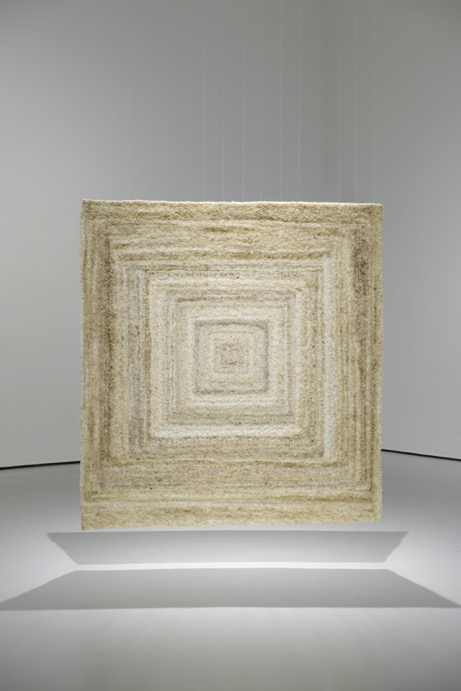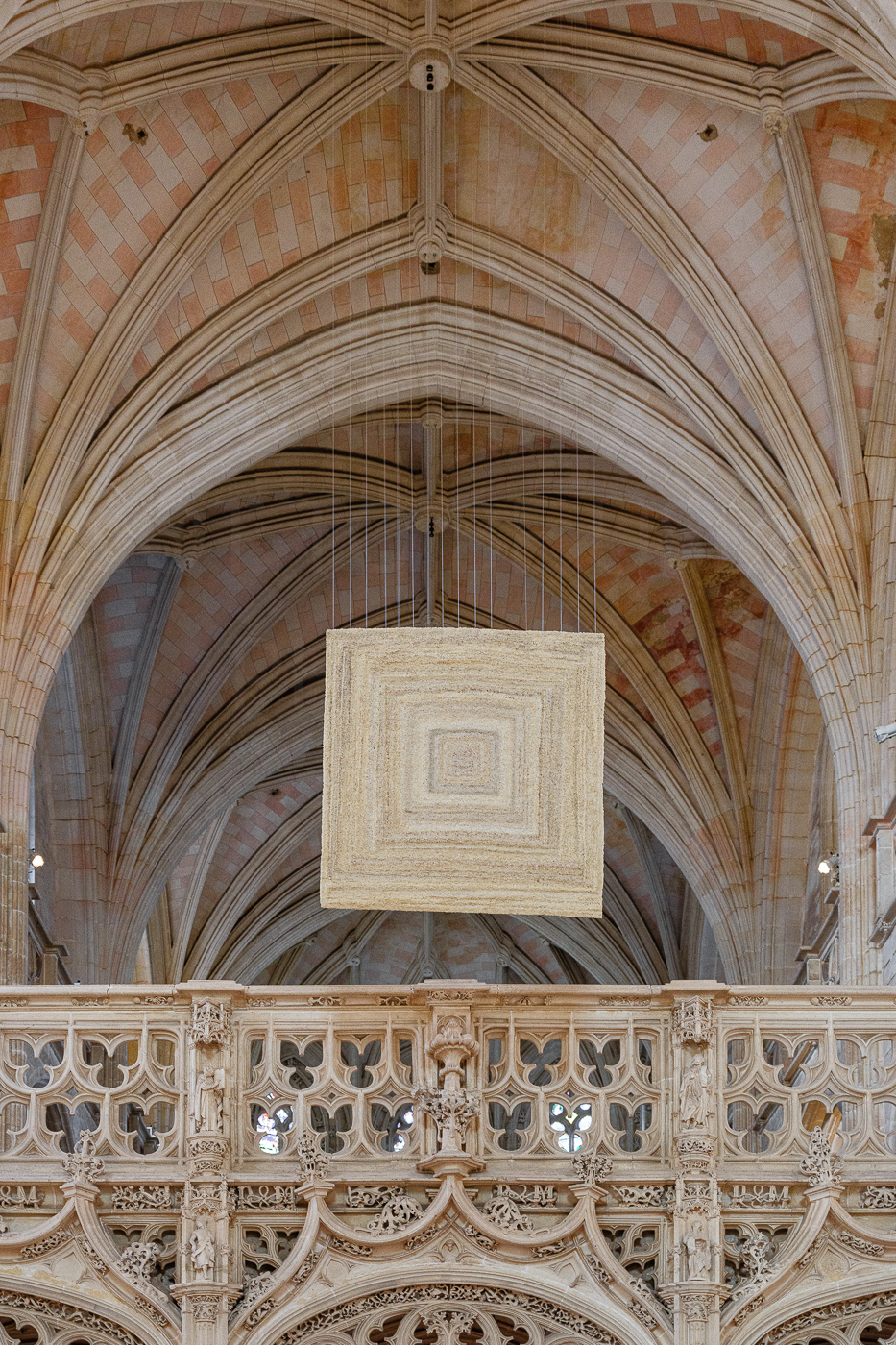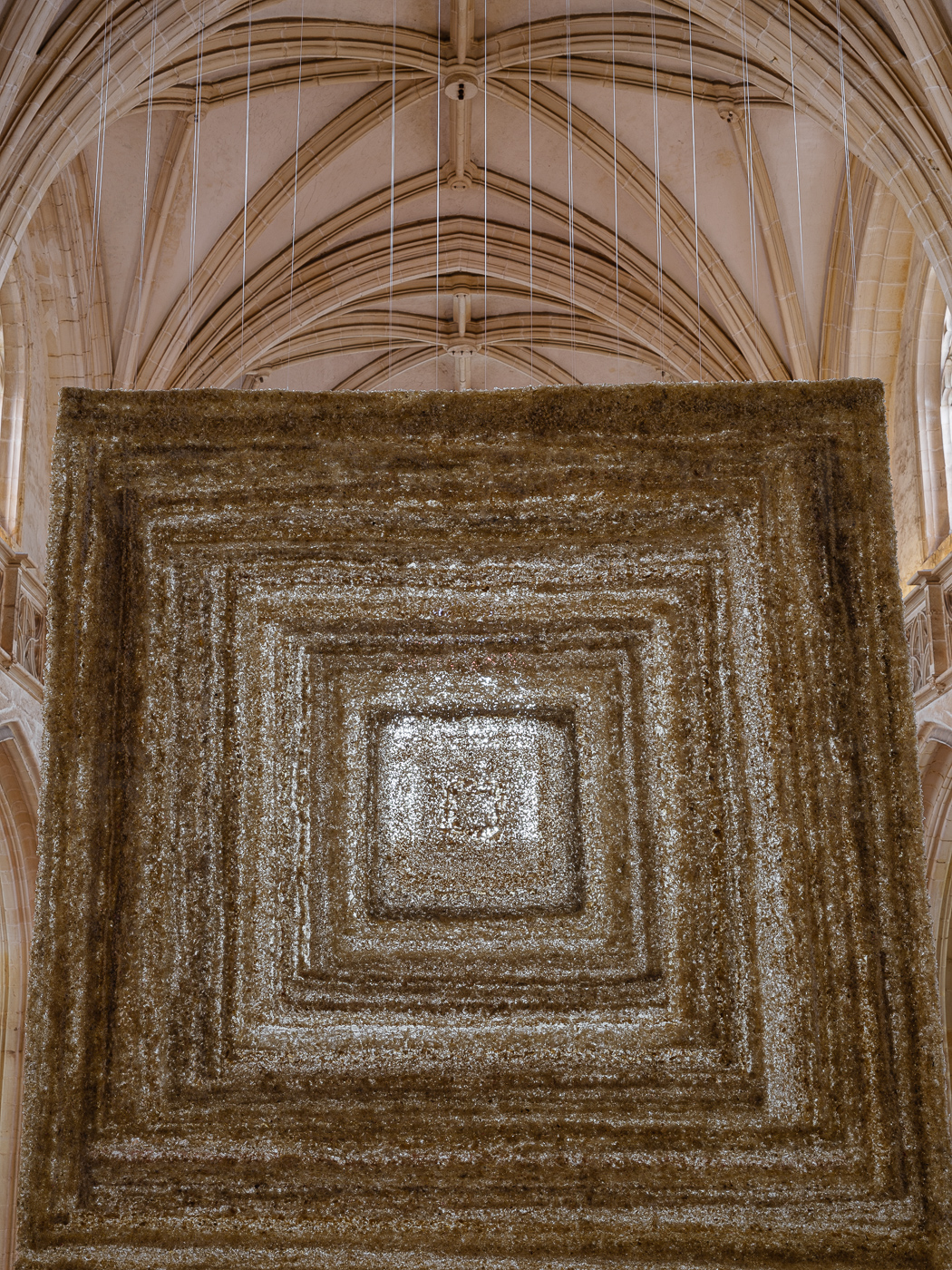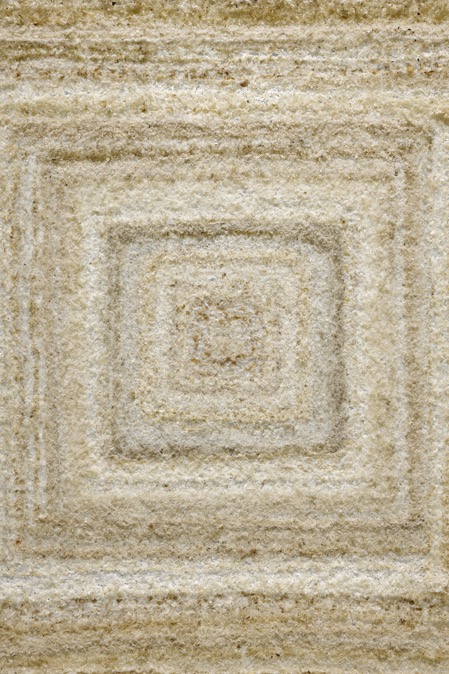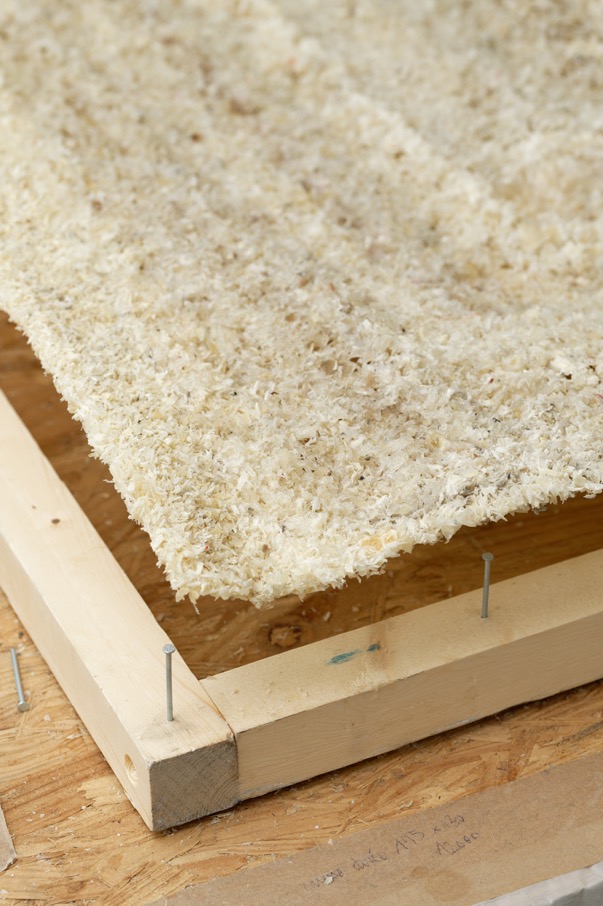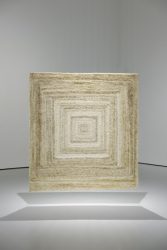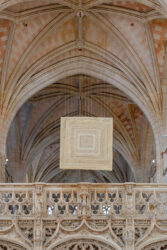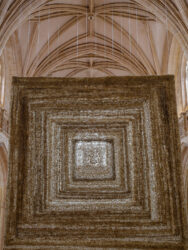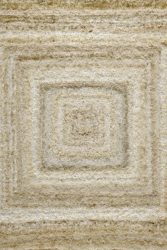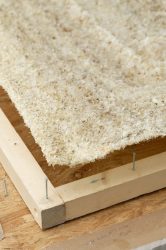The Fabric of skins
A.V. With regard to the exchange, circulation, and interconnection between living beings you have just spoken about, it seems to me that the most emblematic object is the fabric. The skins of thousands of individuals are combined to create a unique work, a whole new experience that you are experimenting with in this exhibition. Is its location right at the end of the exhibition symbolic?
L.S. Yes, it’s important that this work is placed at the end of the exhibition, because I think it’s an extremely positive object, almost the culmination of an elevation. It comprises fragments of skin recovered from podiatrists, which, placed end to end, constitute a large square fabric, which is suspended in front of a light that traverses it. These are in fact the same skins recovered from a process, the same material used for the flowers on the large tree at the start the exhibition. Like the notion of social fabric, this work is about bringing together bodies through foot treatments, in contact with the ground. This fabric is very much connected with the previous, sculptural works, because materially, it comprises fragments of bodies that are brought together, as well as disappeared bodies in ruins. These skins are translucent, and interact with light, so that the ‘fabric’ is a delicate receptacle of energy. Like the wall I mentioned earlier, skin is the element of interchange with the world, and between individuals. The shape is square because it’s the very form of ideas par excellence. In China, the square represents the sky. The temple of the sky (Yang) is square, and the temple of the earth (Yin) is round. The sky is therefore the pure Yang, the energy that requires the earth to have a form. I like this way of seeing the circulation of energies that pass through this ‘fabric’.
As the culmination of this exposition, it also perhaps foreshadows my subsequent work, because most of the works are new creations.
Another thing that interests me about this work is time, and the time it took to be created: more than a year. I see this as the fabric of an era, that of the Covid-19 epidemic, during which other people’s bodies are kept at a distance. Here the bodies are brought together via the skin, in an intimate and hidden way. It’s also about expectations, a fabric such as that woven by Penelope; it’s not a return we are waiting for, but rather a new journey, a fresh start …
Interview with Aurélie Voltz, Director of MAMC+ with Lionel Sabatté
